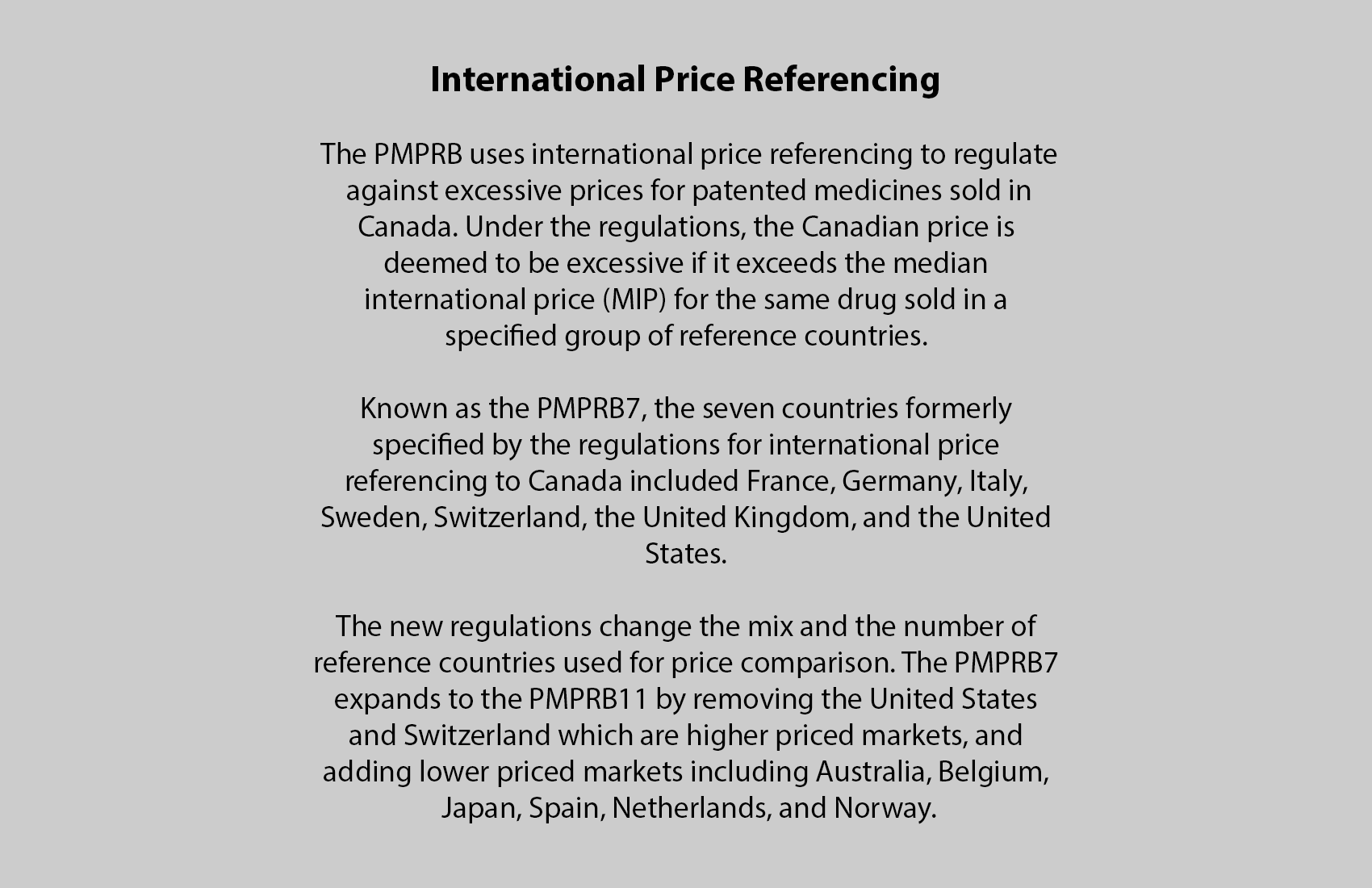Drug prices are not out of control. They’re lower in Canada than in nine of 13 other countries we normally compare ourselves with.
By Brett Skinner, PhD, and CEO of Canadian Health Policy Institute (CHPI).
The federal government recently announced it would work with the provinces to fund universal prescription drug benefits for contraceptives and diabetes medications. It is the first step toward a national pharmacare program that will replace existing public and private drug plans.
The government’s political partner, NDP leader Jagmeet Singh, claimed a single-payer system is needed to control the cost of new drugs, or “patented” medicines, and that a pharmacare monopsony — i.e., a single buyer — could negotiate lower prices through “bulk buying.”
Bulk buying is a non-starter because it would require government to directly purchase, store and distribute products. What drug plans do is simply reimburse pharmacies for the prescription expense claims of eligible beneficiaries.
To achieve savings from scale, a single payer would exploit its monopsony on public reimbursement to extract rebates from manufacturers. It would squeeze pharmaceutical companies by exercising the only leverage available to it: either delaying purchases or not buying at all, which would of course have the effect of delaying or denying Canadians’ access to new medicines.
A 2017 report from Ontario’s Auditor General found the province’s drug plan negotiated rebates averaging 36 per cent off list prices. Pharmacare advocates are betting a single national payer can get deeper discounts without jeopardizing the availability of new medicines in Canada. It’s a risky gamble: research confirms that excessive price regulation or abusive monopsony bargaining can destroy the commercial viability of new drugs.
Whether a single Canadian payer would have substantially more bargaining power is an open question. So far as public reimbursement goes every province is already a monopsonist in its own territory. On top of this, the Pan-Canadian Pharmaceutical Alliance (PCPA) acts like a national monopsonist because it collectively negotiates the reimbursement prices for federal, provincial and territorial drug plans.
PCPA is just one piece of a national bureaucracy devoted entirely to controlling the cost of patented medicines. The Patented Medicine Prices Review Board (PMPRB) has regulated prices since 1987, and the Canadian Agency for Drugs and Technology in Health (CADTH) has conducted health technology assessments since 1989. Plus, a federal super bureaucracy is in the works (the Canada Drug Agency).
Maybe the most convincing reason national pharmacare is unlikely to produce significant savings on patented drug costs is that prices and expenditures on such drugs are not out of control. Prices here are moderate compared to other countries. The 2022 annual report of the prices review board compared foreign and Canadian prices for matched products using “purchasing power parity” — i.e., controlling for currency differences. It found that average prices were higher in seven of the 11 other reference countries it looked at — on average by 22.3 per cent. And the board no longer uses the U. S. and Switzerland for its comparisons, deeming them “high cost” jurisdictions. If they had been included, Canada would have ranked 10th out of 14 current and former high-income comparison countries.
The direct cost of patented drugs is much less than commonly believed. The Canadian Institute for Health Information (CIHI) reported national (public and private) spending on drugs totaling $49.4 billion in 2022. That includes both retail and hospital spending for non-patented drugs, non-prescribed drugs, pharmacist fees, public drug plan administration and even R&D spending by pharmaceutical companies. And it excludes rebates negotiated between manufacturers and public drug plans.
Detailed data from the prices review board annual report show gross national sales of all patented drugs at manufacturers’ list prices were $18.4 billion in 2022 — only 37.2 per cent of the CIHI’s global total. And after accounting for rebates, expenditure totaled $15.6 billion — just 31.5 per cent of total drug spending.
That $15.6 billion is only 4.7 per cent of overall national health expenditure, which was $334.4 billion in 2022. Moreover, the public component of that drug spending was just $5 billion — or 1.5 per cent of total health care spending.
Just one more number: Of the $239.9 billion in total public health expenditure, that $5 billion accounted for just 2.1 per cent. Out of every dollar our governments spend on health care, prescription drugs account for two cents.
If anything, given the impressive benefits of pharmaceutical innovation, new medicines should probably account for a bigger share of health expenditures. Pharmaceuticals are often the most efficient and sometimes the only treatment available. Doctors and hospitals could not deliver modern medical care without them.
Patented medicines embody the latest therapeutic advances. But producing them is expensive, time-consuming, and slow. Imposing excessive cost controls on them is seriously counterproductive.
The current government seems unlikely to rethink its pharmacare policy. But there are ways to close drug coverage gaps without disrupting existing public or private drug plans and at a fraction of the cost estimated for national pharmacare. A government-in-waiting should take a serious look at them.

 A recently published
A recently published